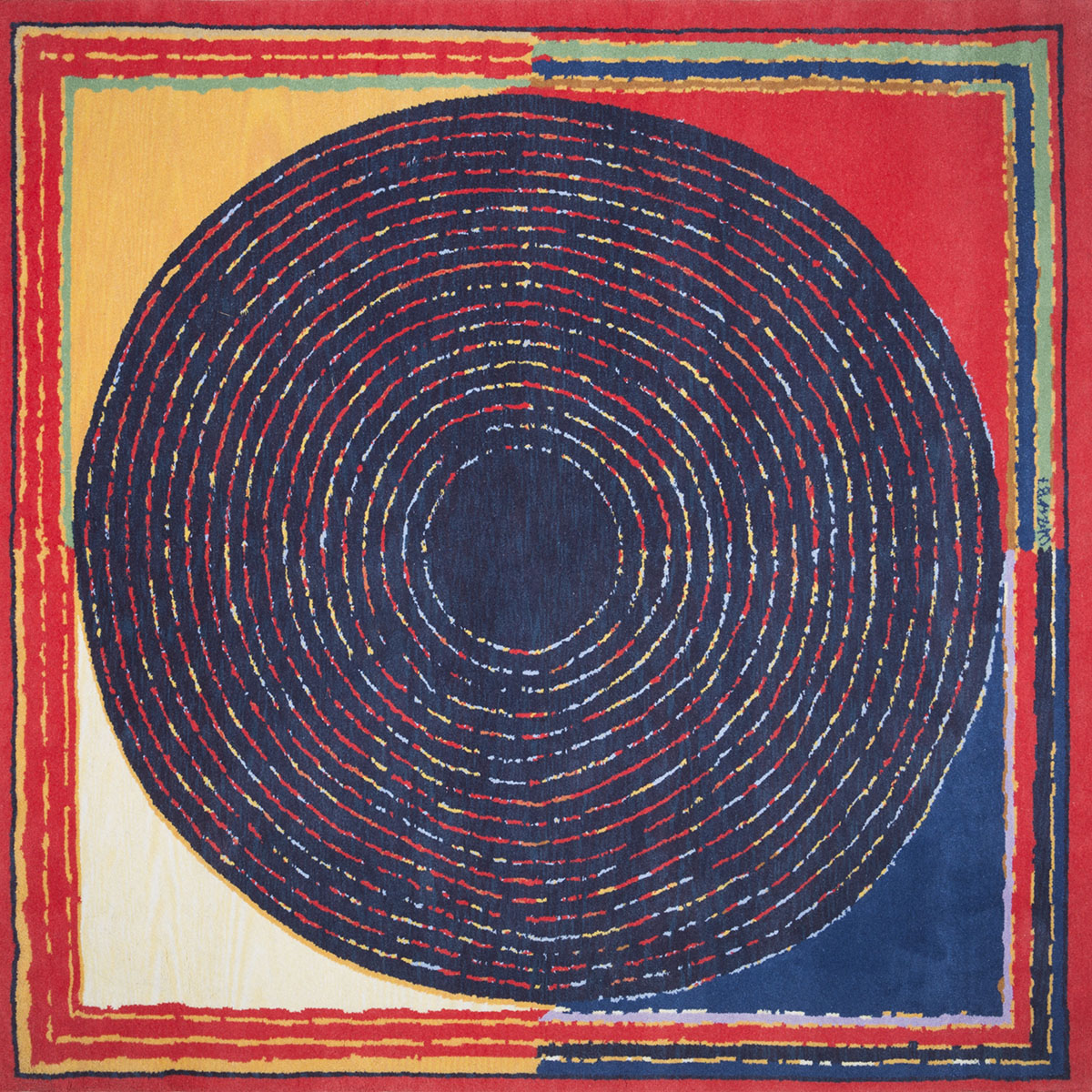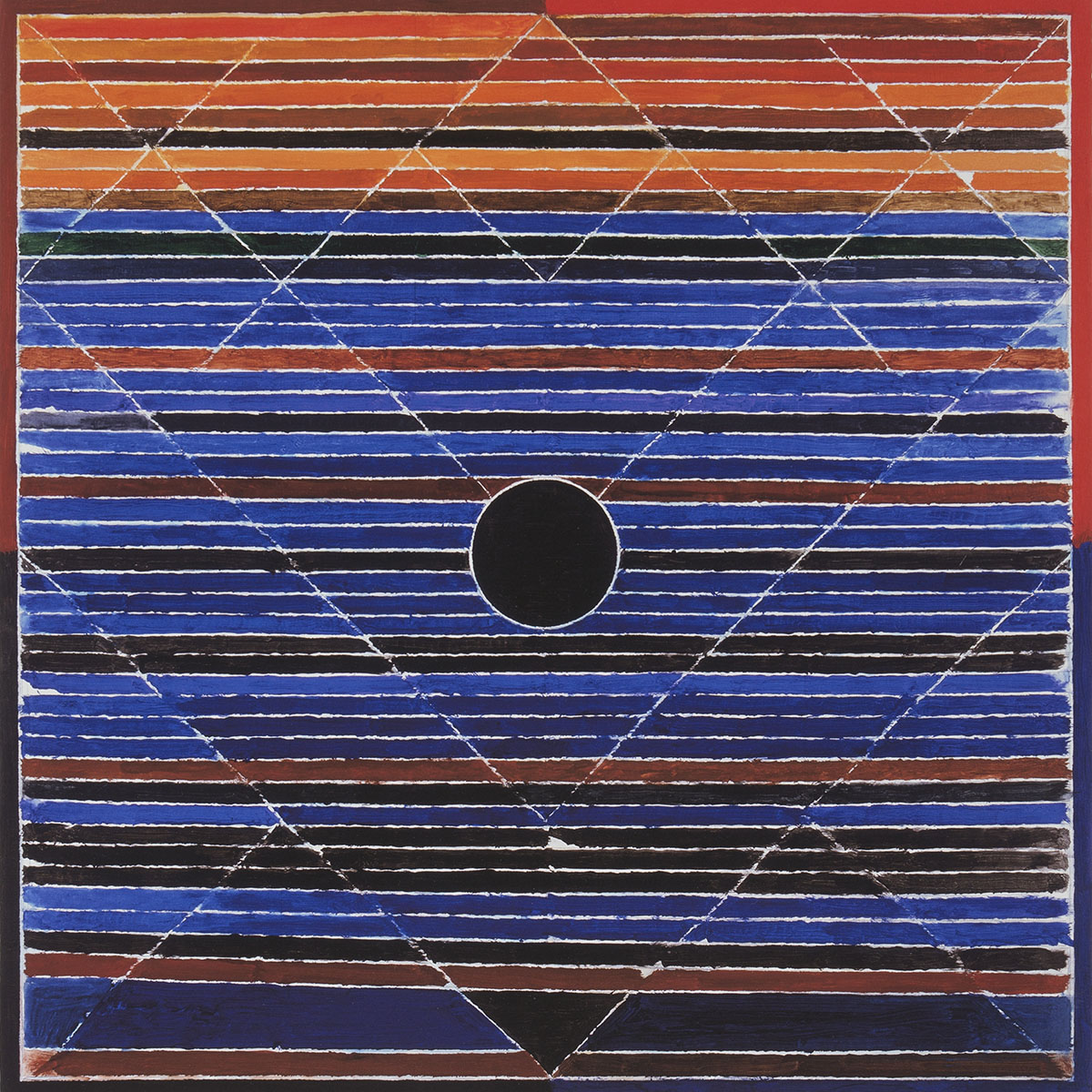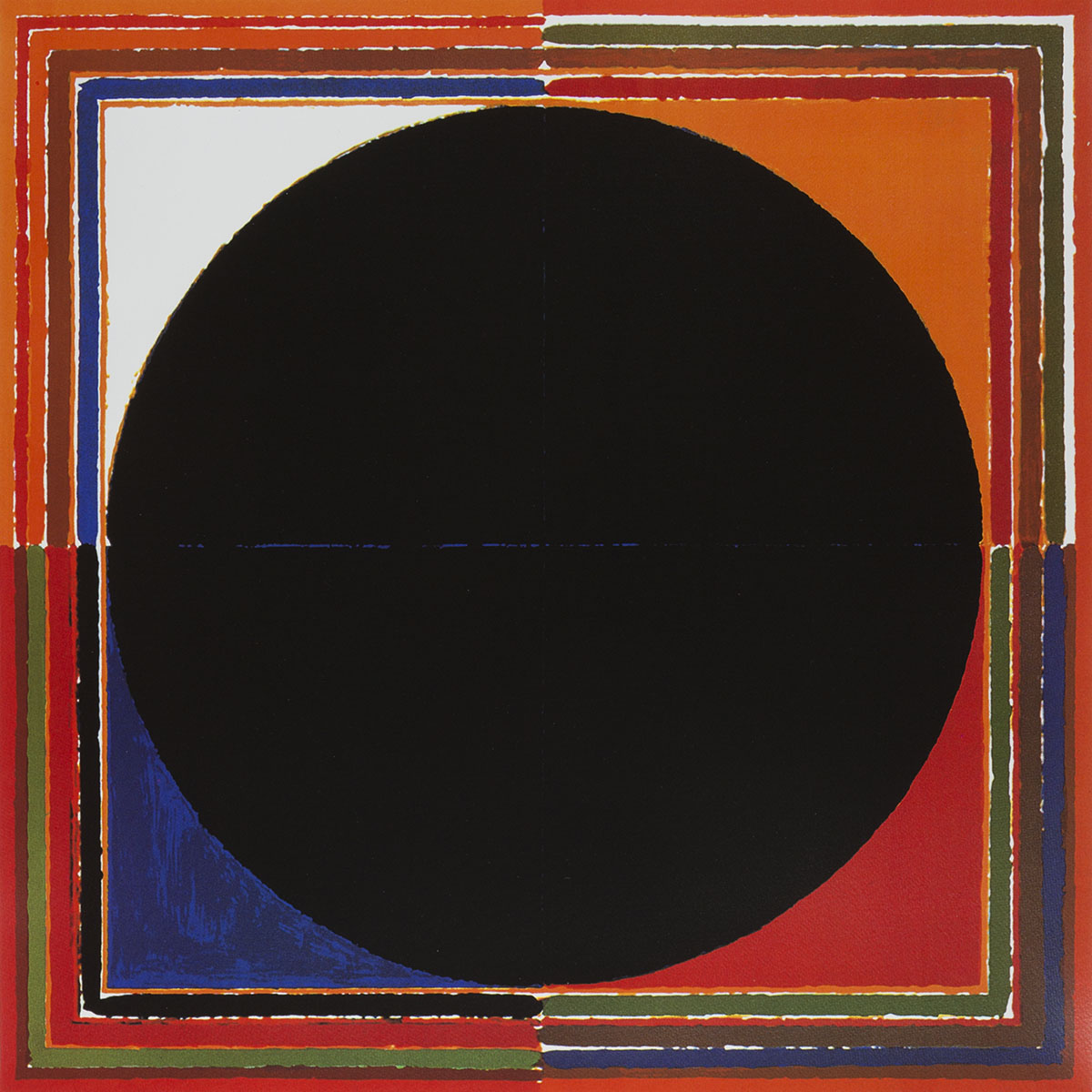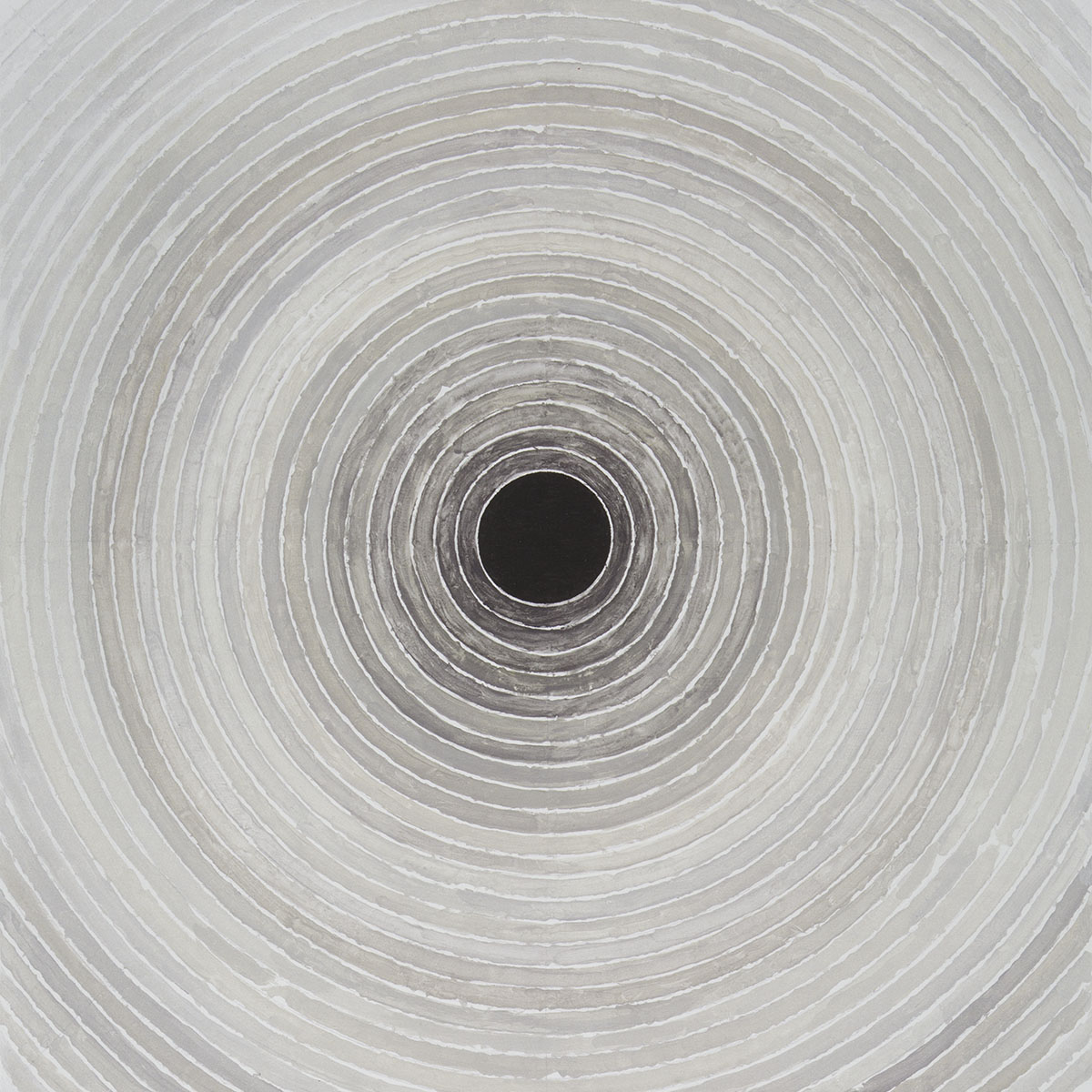Encyclopedia of Art > Articles
SH Raza
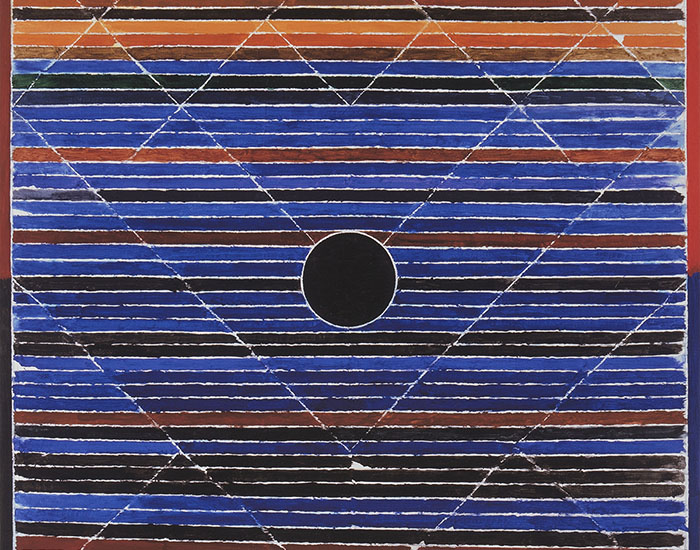
Indian modern artist and painter, Sayed Haider Raza was best known for his abstract and geometric compositions depicting landscapes, forests and motifs from Indian spiritual practices, such as Tantrism, cosmology and most notably the concept of the bindu. He fused a bright colour palette with precise brushstrokes, using Indian spiritual iconography to develop a form of abstract art that focused on geometrical shapes featuring concentric circles, spheres and triangles. Initially working with watercolours and gouache, Raza created studies of landscapes using expressive brushstrokes and impasto application of paint. Inspired by Impressionists such as Vincent Van Gogh and Paul Cezanne, he began working with oil paints and using colour to construct figures and shapes on his canvases, which developed into his trademark style of Abstract Expressionism and Geometric Abstraction.
Raza was born in the Mandla district in Madhya Pradesh and joined the Nagpur School of Art in 1939, where he studied painting. In 1943, he moved to Mumbai where, before commencing his training in painting at the Sir JJ School of Art, Mumbai, he worked at a designer and blockmaker’s studio in the city. Living in his employer’s studio, he would create numerous watercolour studies of the Mumbai cityscape, depicting narrow bylanes, multi-storey buildings and monuments. An early development of Raza’s characteristic abstraction and the non-representational qualities of his cityscapes can be seen in the works from this period: buildings, houses, roads and people are portrayed as masses of colour while the city itself becomes a vast panorama of shifting scenes and moods captured in varying colours. In 1943, two of his watercolours were selected as part of a group exhibition held at the Bombay Art Society. Raza also went on to become one of the founding members of the Bombay Progressive Artists’ Group (PAG), alongside the artists FN Souza, MF Husain, KH Ara, SK Bakre and HA Gade.
In 1948, a year after Indian independence, Raza visited Kashmir, where he became acquainted with photographer Henri-Cartier Bresson, who introduced him to the works of Cezanne and taught him about colour construction. The visit yielded numerous watercolours that were later exhibited in New Delhi. It also resulted in many works that showcased Raza’s early attempts at building a unique style of abstraction, marked by an exploration of urban forms through the use of colour and elimination of detail until the buildings appear detached from the background. These works were exhibited at his 1950 solo show at the Charles Petras’s Institute of Foreign Languages, Mumbai.
In 1950, at the age of 28, Raza obtained a scholarship from the French Government to study at the École Nationale Supérieure de Beaux-Arts, Paris. The first few years of Raza’s life in Paris were dominated by watercolour and gouache studies of the French cityscape. His work from this period was influenced by his Formalist art education in Paris as well as a visual intensity created by using tempera colours with an enamel finish influenced by Rajasthani miniature paintings. Building on his style of abstraction, Raza’s paintings depict buildings and houses with jagged, protruding edges and empty streets painted in deep hues and the motif of a black sun situated above the urban landscape. For instance, His gouache-on-paper Haute de Cagnes (1951) depicts rows of buildings stretching across the canvas while a black orb looms in the upper-left corner. The empty buildings and the black orb make another appearance in Black Sun (1953), which was created using offset printing on paper. Inspired by the colour construction in Cezanne’s work and Van Gogh’s dense palette, Raza shifted his primary medium from watercolour in gouache to oil in an impasto application. Works from this period include the oil-on-canvas Untitled (Village dans la Nuit) (1957), which cemented Raza’s experimentation with form construction and thick colour application.
In 1962, Raza was invited to teach at the University of California, Berkeley, where he grew acquainted with the works of Abstract Expressionists including Mark Rothko, Willem de Kooning, Jackson Pollock and Sam Francis. Their works, characterised by the interplay of shapes and colour composition and the lack of rigid constructions, influenced Raza to experiment further with form and colour, eventually abandoning structures and cityscapes altogether and shifting his preferred medium from oil to acrylic. Raza’s work was simultaneously influenced by recollections of India, including Pahari and Rajasthani miniature paintings, Urdu and Sanskrit poetry, his own childhood experiences in the forests of Madhya Pradesh and the practice of dhyana, which are evident in the play of colours in his works. In the acrylic-on-canvas La Terre (1977), he portrays the natural landscape in expressive brushstrokes and thick colour, informed by his memories of the Madhya Pradesh forests at night. Through this work, Raza evokes darkness interspersed with patches of light to signify the habitations of the Gond tribes in the forests. This painting represents a significant point in Raza’s life, where his mastery over colour as the medium, subject and object of the painting gains visibility. The painting sold at auction for USD 3 million in 1993.
From the 1980s onwards, Raza’s style shifted from the gestural and expressive use of colour to the exploration of organised form and geometrical shapes. Inspired by themes from Tantrism, he began using geometrical forms to depict natural phenomena; his use of colour was now supplemented by a symbolic interpretation of Indian spiritual practices. It’s during this period that the bindu makes its appearance in Raza’s repertoire. In his work Mandala (1975), he utilises geometric designs from spiritual meditative practices and Indian philosophical thought, incorporating them with the primary colours to create a landscape of colour with the bindu located at the centre of the painting. By the 1990s, fuelled by a nostalgia for India and his study of Indian art, Raza moved to an exploration of the concept of germination taking root from the bindu. In his Germination series (1991-2012), he took on the bindu as the starting point for a fusion of geometrical forms and increasingly bright acrylic colours reminiscent of Indian traditions of miniature painting.
Raza exhibited his work at a number of solo and group shows. In 1952, he mounted a group exhibition with Akbar Padamsee and Souza at Gallery Creuze, Paris — his first exhibition since arriving in France. The exhibition was a success and Raza was invited by the Parisian Galerie La France to showcase his work. In 1956, Raza became the first non-French artist to be awarded the Prix de la Critique by the French Government. Subsequently, Raza showcased his art in various international shows and exhibitions, including the Venice Biennale (1957), the Sao Paulo and Brussels Biennales (1958) and the Museum of Modern Art, Paris (1960-62). Raza was awarded the Fellowship of the Lalit Kala Akademi and the Padma Shri in 1981, the Padma Bhushan in 2007 and the Padma Vibhushan in 2013, as well as the French Legion of Honour in 2015. His work is part of the permanent collections of the National Gallery of Modern Art, New Delhi; the Asia Society, New York; and the Musee National D’Art Modern, Paris. Raza moved back to India in 2010, where he lived and worked until his death in 2016 in New Delhi at age ninety-four.
First Published: April 21, 2022
Last Updated: July 26, 2023

